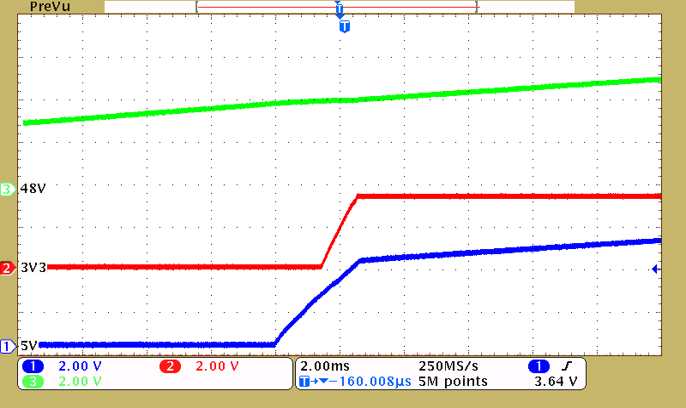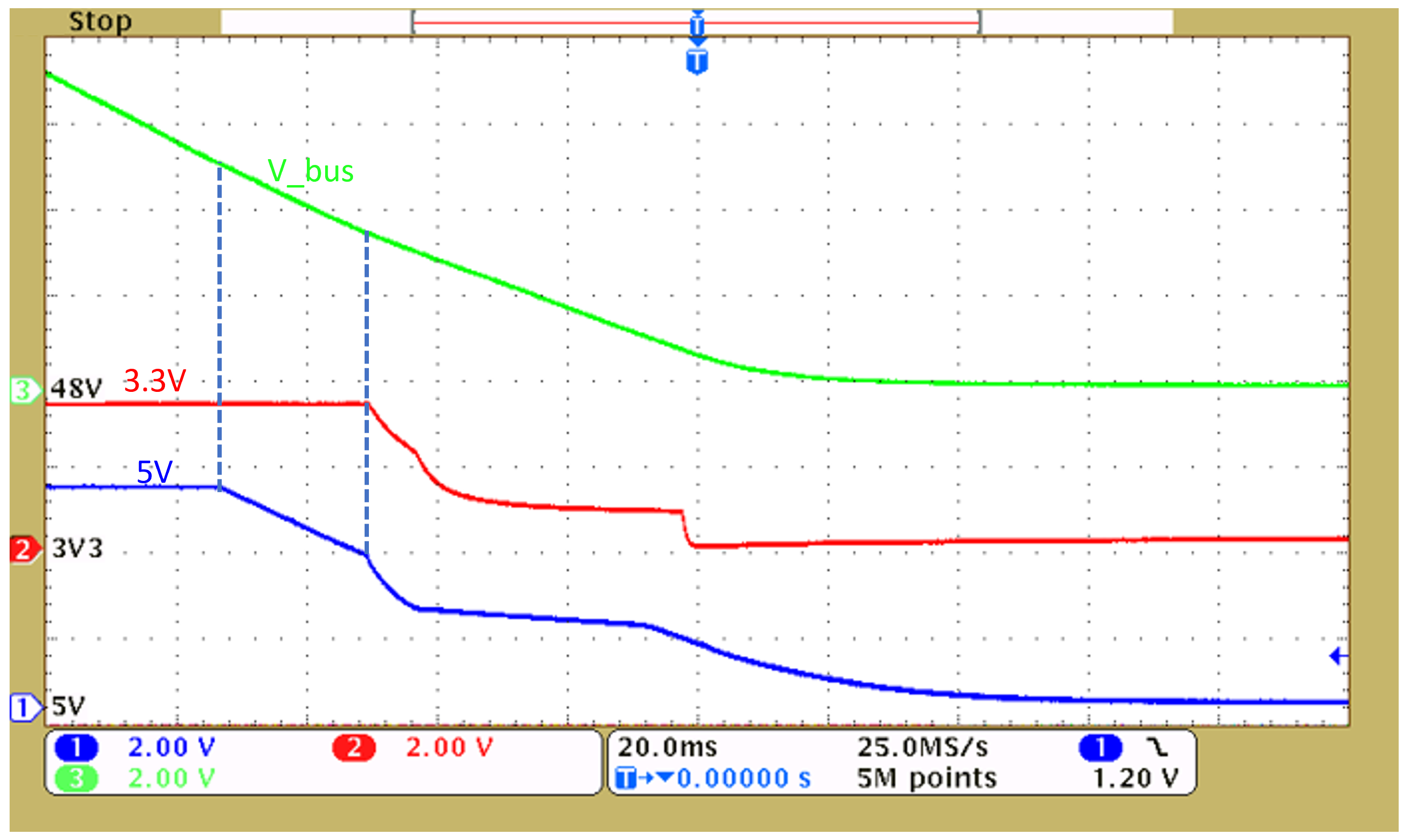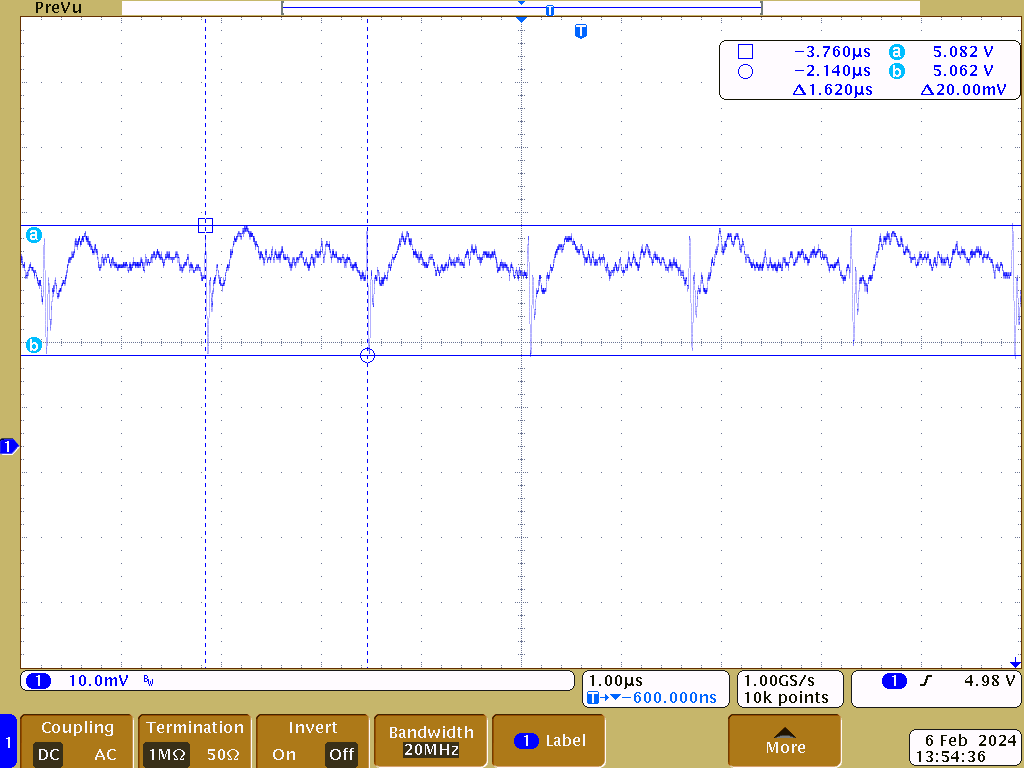TIDUF68 February 2024
- 1
- Description
- Resources
- Features
- Applications
- 6
- 1System Description
- 2System Overview
- 3System Design Theory
- 4Hardware, Software, Testing Requirements, and Test Results
- 5Design and Documentation Support
- 6About the Author
- 7Recognition
4.4.1 Power Management and System Power Up and Power Down
The focus of this test was to validate the onboard 5V and 3.3V power supplies and measure the typical current consumption of the 3.3V and 5V rail. For these tests, the C2000 MCU LaunchPad development kit was not powered from the TIDA-010936. Due to the high step-down ratio 48:5 (48V input to 5V output), the voltage ripple at the 5V rail was validated too.

Figure 4-4 TIDA-010936 System Power Up (48VIN, 5V Rail, and 3.3V Rail)

Figure 4-5 TIDA-010936 System Power Down (48VIN, 5V Rail, and 3.3V Rail)
For the power-down stage, when the bus voltage drops to about 5V, the output of the LMR38010 drops along with the bus voltage. When the bus is lower than 3.3V, the 3.3V rail also starts to drop.
The AC ripple of the 5V rail remains well below 20mVPP in light load. The frequency of ripple is 617kHz, which matches the buck converter switching frequency. The offset of the 5V rail is about 5.07V.

Figure 4-6 5V Output Ripple at Nominal Load (20mA)